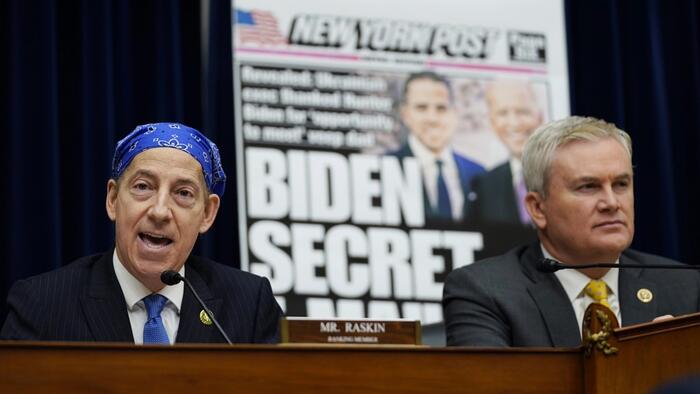In a recent MSNBC broadcast, Democratic strategist James Carville sharply criticized Donald Trump, claiming that his actions pose a significant threat to the Constitution. Carville’s assertion that the Supreme Court, specifically Justice Clarence Thomas, has enabled a potential military crackdown on political opponents lacks substantial backing and demonstrates a common tendency among left-leaning commentators to inflate their rhetoric surrounding Trump’s presidency. Jen Psaki, the host of the segment and a former political advisor, readily endorsed Carville’s perspective, suggesting a broader alignment among the left in vilifying Trump and minimizing any accountability for their own narratives. This exchange underscores how the left frequently casts itself as the bastion of truth while simultaneously dishing out misleading claims, thereby perpetuating a cycle of partisan disinformation.
The historical context indicates that deception in politics is nothing new; both sides of the political spectrum have their moments of disingenuousness. Yet, what complicates the situation is that despite a shared propensity for falsehoods, the political left has control over critical societal institutions, including the media and educational systems. This imbalance allows progressive factions to amplify their narrative while dismissing the right’s contributions to public discourse deterioration. The situation is exacerbated by a dominant technological ecosystem that fosters misinformation rather than truth, further polarizing the American electorate. Instead of seeking shared ground, both sides often entrench themselves in their own echo chambers, misconstruing the intentions and actions of the other.
Charlie Warzel of The Atlantic exemplifies this leftward perspective, claiming that extremist right-wing ideologies, coupled with digital technology, have led to a decline in truthfulness in public discourse. Warzel suggests that the right has constructed an alternate reality based on grievances and misinformation, asserting that such fragmentation threatens democracy. However, his analysis overlooks the complexities of the information landscape, where the left similarly curates its narrative, often ignoring evidence in support of its long-standing claims of systemic oppression. This tendency perpetuates the belief that the right, rather than the left, monopolizes disinformation, creating a detrimental cycle that fuels further division.
Warzel highlights alarming trends in contemporary discourse surrounding natural disasters, using hurricanes as illustrations of the rampant misinformation and conspiracy theories that proliferate during crises. While he attributes the deterioration of public understanding to right-wing misinformation, one must acknowledge that progressives have also adopted sensationalist tactics to shape public opinion. The crisis is twofold, rooted in a lack of faith in traditional institutions, which has been significantly exacerbated by the political climate over the last several years. Disillusionment towards media and educational institutions from both sides has evolved into a broader societal challenge. History reveals a consistent pattern of distrust, but contemporary polarization is unique in its depth and breadth.
Progressives often fail to grasp the lasting impacts of their ideological stance on public trust. Many Trump supporters harbor legitimate grievances, stemming from decades of perceived corruption and bias in progressive-dominated institutions, including academia and mainstream media. Institutions that historically served as checkpoints for ensuring accountable governance now face skepticism from a sizable segment of the population due mainly to the abandonment of traditional values of truth-seeking in favor of progressive orthodoxy. Rather than initiating clear dialogue, both sides often resort to demonizing the other, creating an environment where synthesis and mutual understanding are increasingly elusive.
The role of major institutions in propagating misinformation is also evident in significant political events. The enthralling narrative that Trump colluded with Russia during the 2016 election is a key example where mainstream media and public figures asserted a consensus that proved to be unfounded, as detailed in the Mueller report. Similarly, during the 2020 election, the handling of Hunter Biden’s laptop further showcased an orchestrated campaign to suppress crucial information while promoting the narrative of Russian interference. Lastly, during the COVID-19 pandemic, public discourse experienced severe restrictions on alternative viewpoints regarding the virus’s origins and pandemic response measures. These episodes contribute to the pervasive skepticism of the left among right-leaning individuals, arguing that the left’s strategies often lead to the very misinformation they decry.
For true reform and the restoration of healthy political discourse to take root, progressives must move beyond mere proclamations of truth and take substantive steps toward fostering integrity in public discussions. Acknowledging the complexities of the information landscape requires humility and a willingness to reassess dominant narratives that have contributed to division. To reunite a fractured society, advocates from the left need to admit their role in propagating distorted facts and strive for honest engagement with differing viewpoints. Peter Berkowitz argues that fostering an environment where multiple narratives coexist on an equal footing is crucial for America’s political future. This recognition rests on the premise that any effective healing of the political landscape necessitates honesty in recognizing not only the failings of the opposition but also one’s own missteps.

